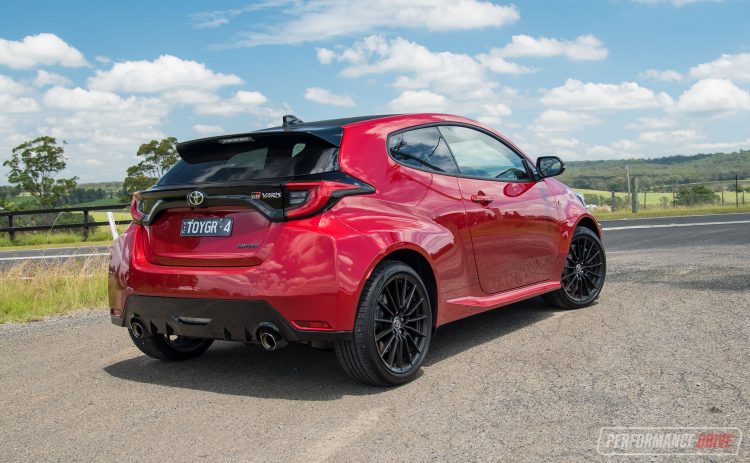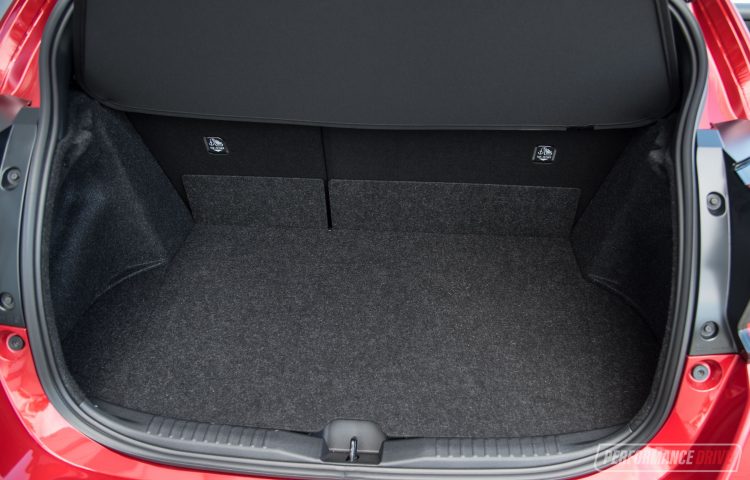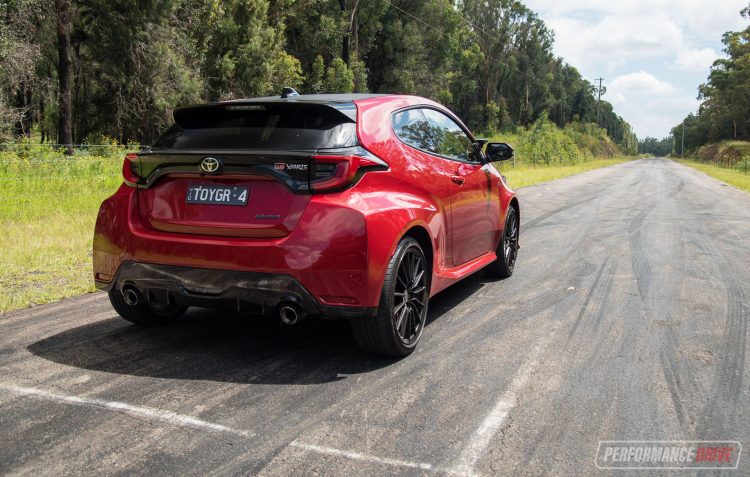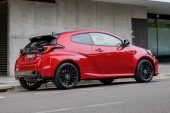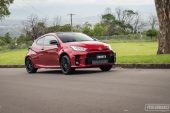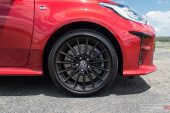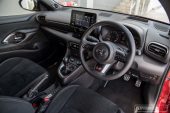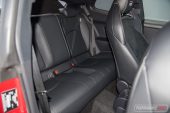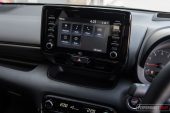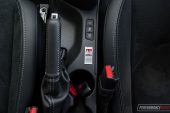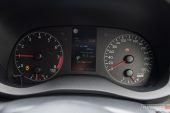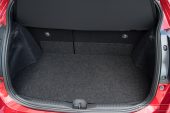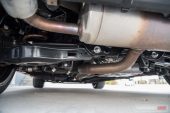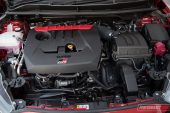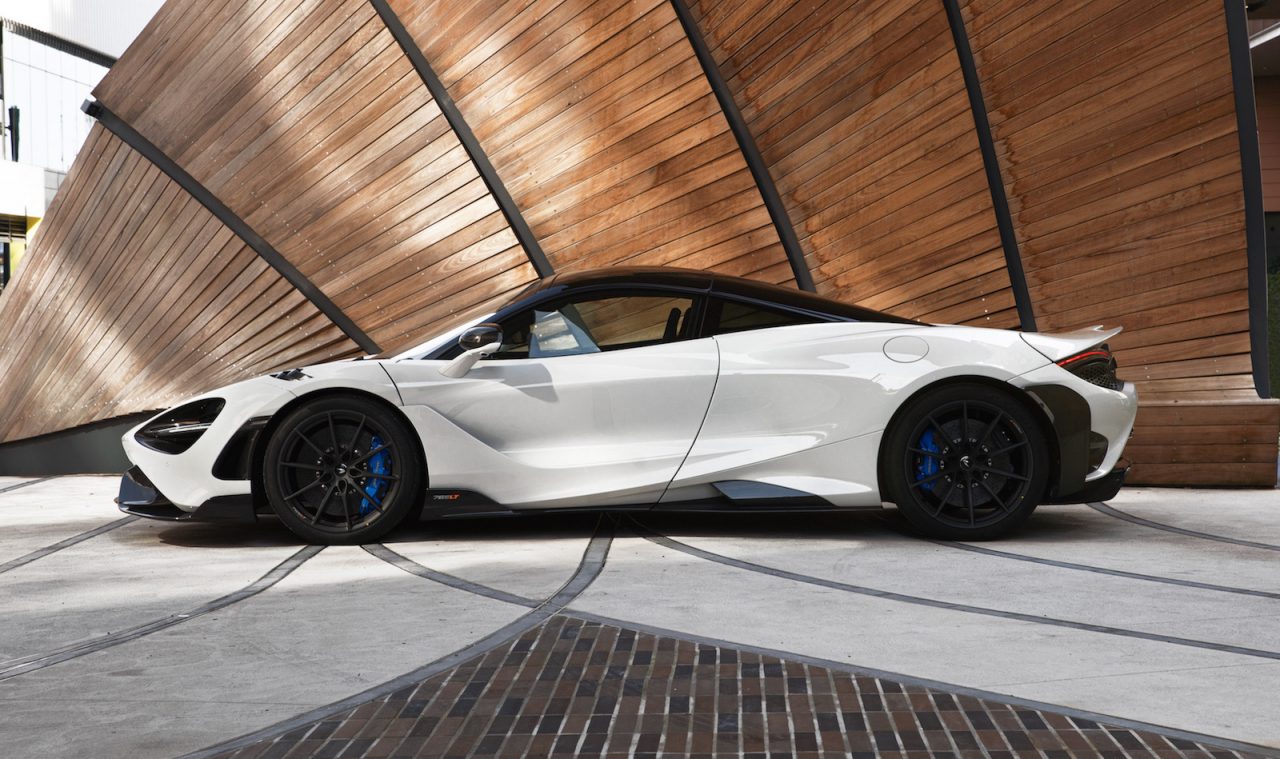At last, Toyota has introduced a proper hot hatch. The GR Yaris is here to duke it out with the likes of the Ford Fiesta ST, the upcoming Hyundai i20 N, and VW Polo GTI. This is the only one with all-wheel drive, and it is easily the quickest and most powerful of the lot. We’ve heard plenty of hype and praise about this very interesting new model. It is all that it’s cracked up to be?

In case you’re wondering what the heck it is exactly, this is the work of Toyota’s recent motorsport partner and now performance division, Gazoo Racing. You may recognise the GR letters from the GR Supra, and soon you’ll see more of it with ‘GR Sport’ variants, such as the C-HR GR Sport. There’s also talk of a hardcore GR Corolla coming, potentially running the same powertrain as this car.
There is just one main variant of the GR Yaris, however, a special Rallye edition is also available but only in limited numbers. It adds limited-slip differentials at the front and rear, uprated brakes and suspension, and unique lightweight BBS wheels.
Prices for this regular version start from $49,500 (excluding on-roads). That is a lot, especially in comparison to those key aforementioned compact hot hatch rivals. But as mentioned this is the quickest and most powerful vehicle in its class, and the only one with AWD. Does that justify the price? Let’s take a look.
2021 Toyota GR Yaris – THE SPECS
[column width=”47%” padding=”6%”]Engine: 1.6-litre turbo three-cylinder
Output: 200kW@6500rpm / 370Nm@3000-4600rpm
Transmission: Six-speed manual
Drive type: All-wheel drive
Wheels: F & R: 18×8.0, 225/40
ANCAP: Not tested (regular Yaris 5 stars)
Tare weight: 1290kg
Power-to-weight: 6.45:1 (kg:kW)
Official fuel economy: 7.6L/100km
Economy during test: 9.1L/100km
Fuel capacity/Type: 50L/98 RON[/column] [column width=”47%” padding=”0″]Power efficiency: 26.31kW:L/100km
0-60km/h: 2.05 seconds*
0-100km/h: 4.80 seconds*
0-200km/h: 19.11 seconds*
60-110km/h: 3.49 seconds*
1/4 mile: 13.12 seconds at 174.3km/h*
Max acceleration: 1.029g
100-0km/h braking: 3.01 seconds at 38.80 metres*
Max deceleration: -1.099g
Decibel at idle: 51*
Peak decibel at 60-100km/h: 89*
Priced from: $49,500[/column][end_columns]
* Figures as tested by PerformanceDrive on the day. Factory claims may be different
2021 Toyota GR Yaris – THE PACKAGE
There is no other car like it on the market. Look how fat the stance is. Those bulging wheel arches enveloping tuner-style Enkei 18-inch alloy wheels, and the massive front bumper bar intake and equally huge intercooler hiding within are not fooling anybody.
Some hot hatches and sports cars go for a subtle theme. This is far from it. It’s loud, proud, and buzzing with energy. Just from the exterior design. And it’s not just being loud to attract attention. The bodywork is designed with maximum downforce and aerodynamic performance in mind. Toyota collaborated with former WRC champion Tommi Mäkinen and his firm Tommi Mäkinen Racing to help come up with the package.
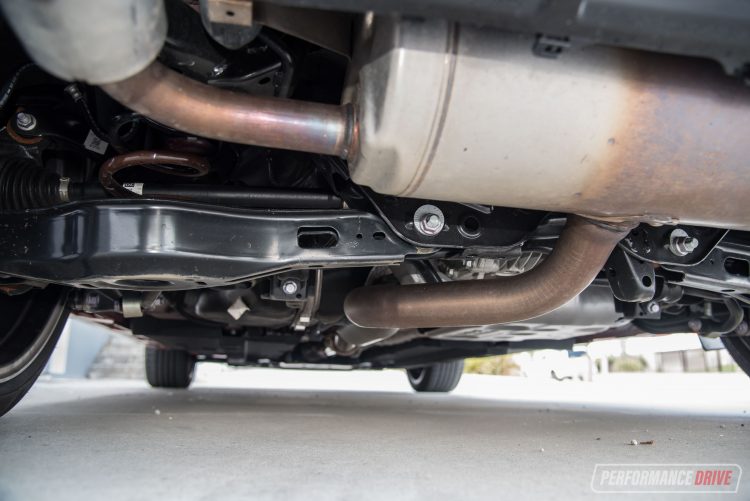
Peel away the body and you’ll find the Toyota New Global Architecture, just like in the regular new Yaris. However, Toyota says the GR uses a similar front end to the normal model, but the rear end is actually closer related to the Corolla.
In particular, this uses a multi-link rear suspension arrangement to help support the rear portion of the driveline, unlike the common Yaris which is suspended by a torsion beam. That alone is a big deal, as not many vehicles in this class show off multi-link at the back. What’s the difference? In short, the breadth of driving dynamics are spread wider as the rear wheels can react completely independently to each other.

Toyota has gone to enormous length to ensure the outfit is as light as practically possible, fitting a carbon fibre roof like what’s seen on the big boys of the sports car world. It saves 3.5kg. There’s also an extensive use of lightweight materials in the rigid frame, which also lower the centre of gravity, while the bonnet, hatch lid, and doors are all made from aluminium. These panels save 24.1kg over the regular five-door Yaris. As a result, the tare weight is just 1290kg.
Toyota says this engine is the most powerful production three-cylinder automotive engine in the world. Ever. Peak power in Australia is 200kW at 6500rpm, and peak torque is 370Nm between 3000-4600rpm (Euro-spec is a bit lower due to the fitment of more stringent emissions-catching components). We need to dig deeper into the facts and figures on this one to try and understand more about this marvel of an engine. Feel free to skip a few paragraphs ahead if techy stuff causes you to yawn persistently.
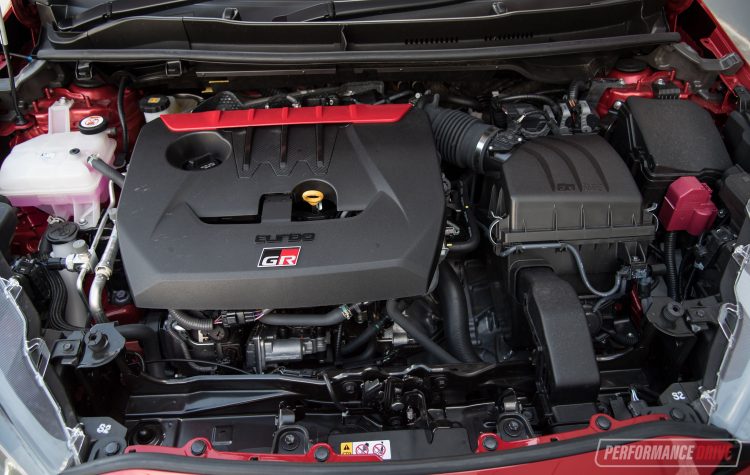
So it’s a brand-spanking-new 1.6-litre turbocharged three-cylinder engine – a weight optimisation measure in itself over a typical four-pot. It uses twin overhead cams with four valves per cylinder, with machined intake ports and large exhaust valves. There’s also variable valve timing, direct and port injection, and shot-peened pistons with resin-coated skirts.
The compression ratio is 10.5:1, which is very high for a forced-induction motor, but the large cross-flow intercooler and 10.8L air cleaner box help to keep intake temperatures down. Interestingly, Toyota hasn’t opted for a twin-scroll turbocharger, but it does run on a ball bearing shaft to optimise spool-up and efficiency. According to the on-board turbo boost gauge, we saw the turbo running at around 140kpa (20.3psi), which is surprisingly not that high given the power output.
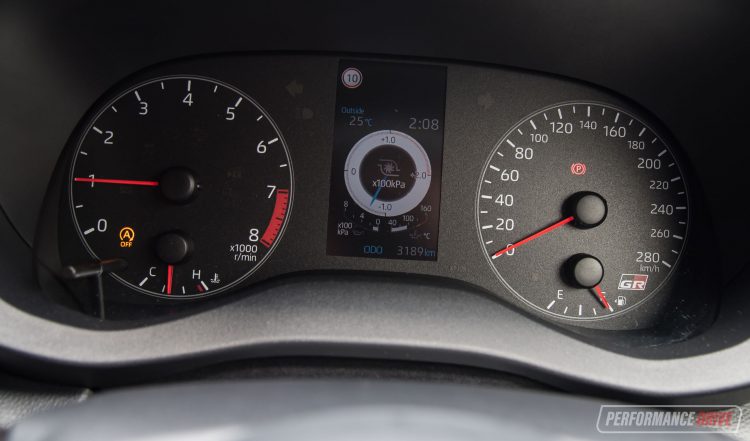
You know when a carmaker means business when they fit a factory fuel surge tank. Yep, the GR Yaris comes with a 2.1L primer tank. Toyota says this is needed as the car can produce up to 1.2G during hard cornering. Other highlights include an aluminium engine oil cooler, and a large-capacity water pump.
This is one impressive engine, there is no doubt about it. But for 200kW, it isn’t as eco-friendly as you might expect. On the official combined cycle (Australian-spec) the GR Yaris consumes 7.6L/100km and emits 176g/km in CO2. For perspective, the 225kW/450Nm 2.0T in the BMW M135i xDrive is rated 7.5L/100km and 171g/km, while the 213kW/380Nm 2.0T in the 2020 Audi S3 is rated 6.7L/100km and emits just 155g/km.
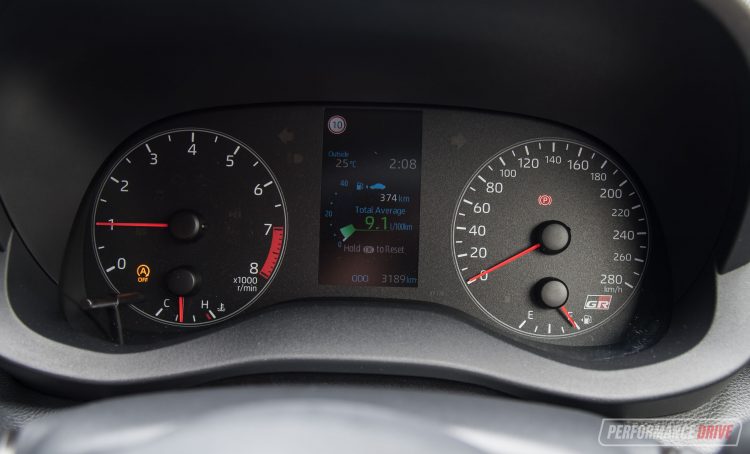
To get the most out of this engine Toyota isn’t stuffing around with front-wheel drive. We’re not saying the key compact hot hatch rivals are ‘stuffing around’, but they don’t have to manage anywhere near the level of power or torque this thing unleashes.
On the back you might notice the GR-FOUR badge. That’s in reference to the all-new four-wheel drive system. It also pays tribute to the iconic Celica GT-Four sports car of the 1990s. In the GR Yaris the system comprises of an electronically-controlled setup which is designed to be lightweight, compact, and simple, but also designed to fully optimise the driving potential.
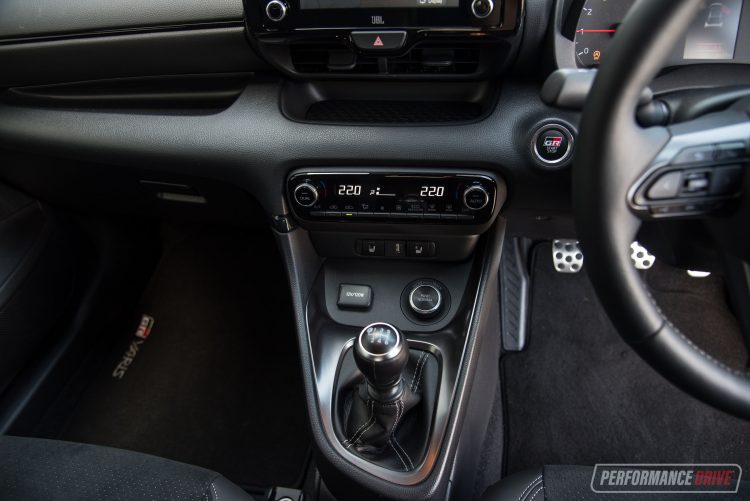
The system is variable and can theoretically direct up to 100 per cent of the engine’s force to either the front or rear axle. This active torque-split mechanism runs with a multi-plate coupling mounted just ahead of the rear differential. Drivers can toggle through three main torque-split modes using a dial on the centre console, with Normal (60:40), Sport (30:70), and Track (50:50).
As for the other interesting and important components, the GR Yaris adopts a unique suspension arrangement with heavy-duty parts to handle increased loads and to support rigorous driving stints. It comes with stiffened bushes, large-bore 35mm front and 32mm rear dampers, and pillow-ball joints for the rear end.
Braking is provided by 356mm front two-piece ventilated discs with four-piston calipers, and 297mm rear ventilated discs with two-piston calipers. Some special performance pads are also included. Perhaps most excitingly of all, there is a proper manual handbrake so you can manipulate the rear end during high-tempo driving. It can also be used to stop the car rolling away when parked, apparently.
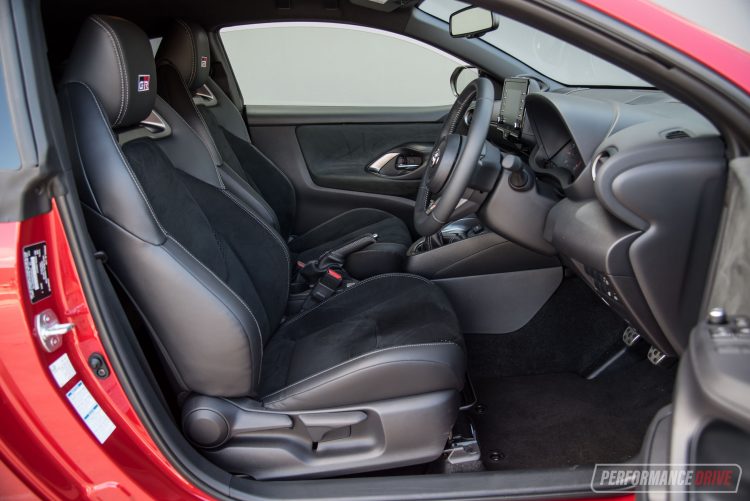
After all this talk about the entire package, we forgot to mention the interior and comfort. Well, this is a driver’s car. Clearly. But basically it is very similar to the regular Yaris. You’ve got Toyota’s older 7.0-inch touch-screen media interface on the dash, an eight-speaker JBL sound system, dual-zone climate control, and a basic twin-gauge mechanical instrument cluster with a 4.2-inch info display in the middle.
It is pretty comfortable, but we’re not a big fan of the tall and upright cabin orientation. We’d prefer something more hunkered down. However, this is common for this class and it’s an approach used to maximise the minimal cabin volume available. Front passenger room is good, while the rear features only two seats. That’s probably a good thing though as headroom is restricted by a low ceiling. In other words, you’ll need to lean in towards the middle to get comfortable.
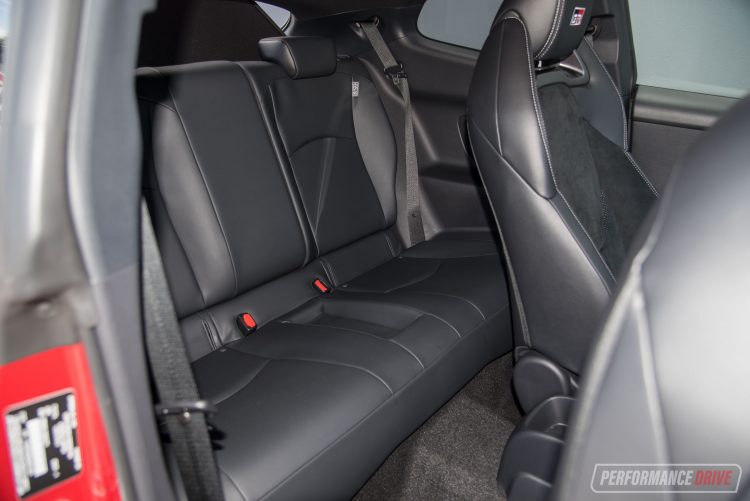
Boot space is also a measly 141L, or 737L with the rear seats down. There’s not much you can do with this space, except stash your racing suit and helmet. The battery is located under the flimsy/lightweight removable floor, along with a tyre puncture repair kit.
2021 Toyota GR Yaris – THE DRIVE
It starts just like any other modern three-cylinder petrol engine. We were expecting a bark and some bass. But no, the soundtrack from the tailpipe is pretty ordinary. If you had to pick your mother-in-law up from the airport, she’d think you have bought a nice respectable city car. That alone has its benefits. If we bought one though we’d be straight off to the exhaust shop to get something more substantial fitted. Even with a multi-mode flap so you can still seem sensible when the time calls.
Once you’re up and running, you do start to notice something very unusual for this type/size of a car; torque. Loads of torque. Contrasted with the inherently odd-sounding three-cylinder thrum, it puzzles your brain. You hear an off-beat little engine that kinda sounds like it’s struggling, yet, the firmer you press the throttle, the car seems relentless in picking up speed. It really is like driving down a very steep hill. It is truly amazing in a literal sense.
With all of that torque available from around 3000rpm, this car is very easy to buzz around town in. It feels very zippy but without seeming like it’s trying. You can squirt ahead of traffic, especially off from the lights, reaching 60-70km/h in no time. This herculean engine character also means you can pull away from roundabouts in third gear with no trouble – not something that can be said of many other three-cylinder engines on the market.

The steering feel is sharp and responsive, running a rack-and-pinion setup with electric assistance, and a quick gear ratio of 13.6:1. In fact, it only requires 2.36 turns to go from lock to lock. We quite like the standard Yaris steering as it has an engaging and sincere character to it. And this is much the same, only more direct and more responsive.
Lastly in terms of practicality and day-to-day driving, the suspension isn’t as rigid as some rivals. It soaks up bumps well and without sending bone-rattling ricochets through the cabin. Yes, it is taut but we wouldn’t describe it as too firm. Toyota deserves big credit in this area as tiny cars like this with extremely short wheelbases can be very difficult to tune and balance in this area.
Okay, enough stuffing about. How does this micro machine go when you tackle some spirited roads? Well, firstly, the agility is just incredible. Even at the last minute you can change directions and the car responds with utter stability and confidence.
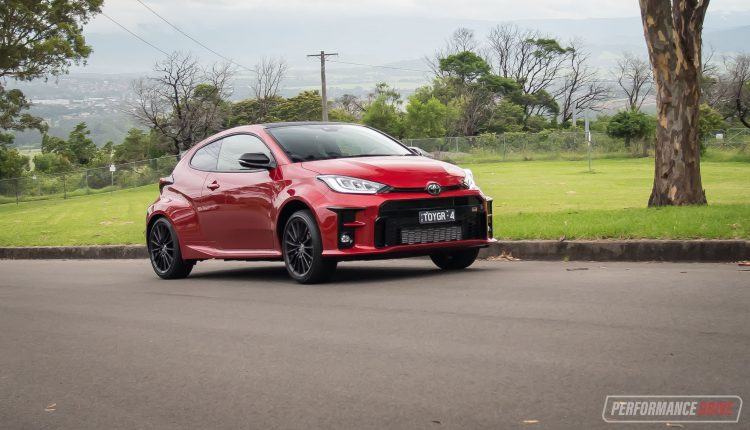
Power-down around corners is best-experienced in Sport mode as more of the engine torque is distributed to the rear axle. And it is noticeable. However, if it’s sheer grip you need, such as in wet conditions, the Track mode is a more predictable setting. There is a very, very mild tendency to understeer, but it is a controllable characteristic, especially on a mountain road and so on.
Between corners, the GR Yaris really hauls arse, and the engine sound is exciting from within the cabin. The manual shift action isn’t the slickest in the business, but it is possible to perform very quick shifts without crunching gears. Toyota also offers its ‘IMT’ (intelligent manual transmission) rev-matching as standard, which can be turned on/off at the touch of a button. However, heel-and-toe downshifting is entirely possible thanks to good pedal placement.
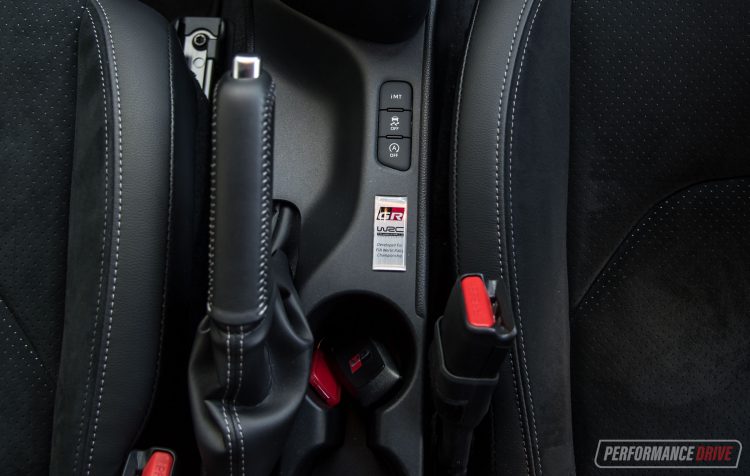
The braking performance is great over a long, high-tempo drive, but during our usual 100-0km/h tests the results weren’t anything special. The shortest distance we achieved was 38.80m, which is pretty average for a regular hatchback. We suspect the 225/40 Dunlop SP Sport Maxx tyres might be the reason for this; tyre squeal seems to come on fairly early during hard braking. Fortunately, the ABS doesn’t cut it too early.
As for straight-line acceleration? We saw some mind-blowing numbers from our Vbox. You can read all about our results in a separate story here. But in essence, the best 0-100km/h we saw was just 4.80 seconds. That’s quicker than many high calibre sports cars. We also clocked the 1/4 mile in 13.12 seconds, and 0-200km/h in 19.11 seconds. This thing is seriously quick.
2021 Toyota GR Yaris – THE VIDEO
2021 Toyota GR Yaris – THE VERDICT
This is definitely one of the most exciting little cars currently on the market. The performance credentials are genuinely astonishing for what it is, and the glued-down handling and multi-surface capability makes it an ideal track day weapon or even a weekend club racing/rally car.
Everyday practicality is hampered by the small boot, and the $50k retail price is very high for this specific class. We’d also recommend getting an actual exhaust system as the stock setup is way too boring and out of context with the rest of the car.
[column width=”47%” padding=”6%”]PROS:
– Finally a hot hatch from Toyota
– Awesome low-end torque and outright acceleration
– Very agile and engaging handling
– Muscular design – love the fat rear
– Serious motorsport-derived components
[/column] [column width=”47%” padding=”0″]CONS:
– A bit too quiet at the tailpipe, but sounds good inside
– $50k is too much for this class, despite being AWD/most powerful
– Tiny boot[/column][end_columns]
As always, if you’re thinking about buying a new car don’t forget to click here to speak with our car buying specialists.
